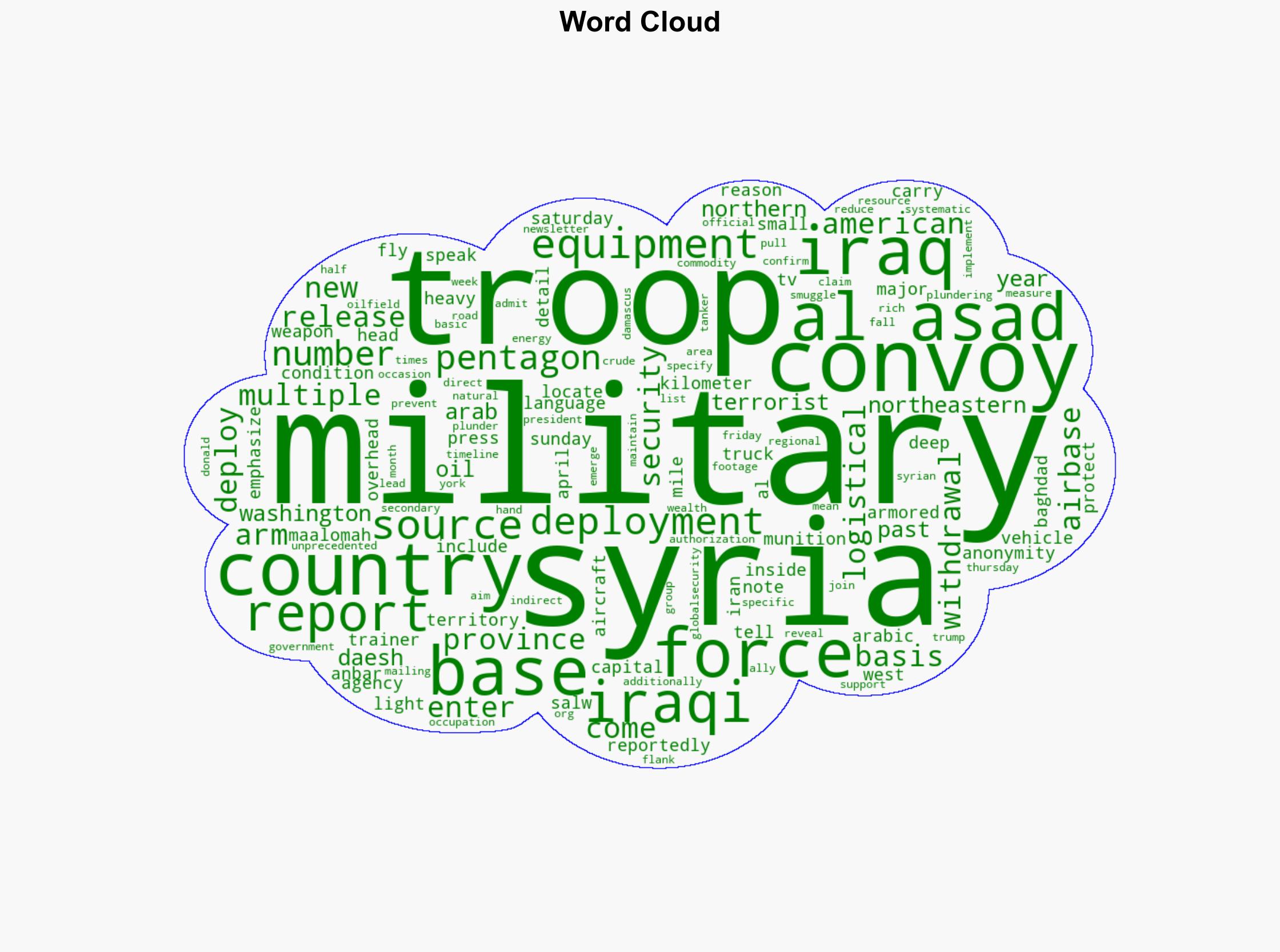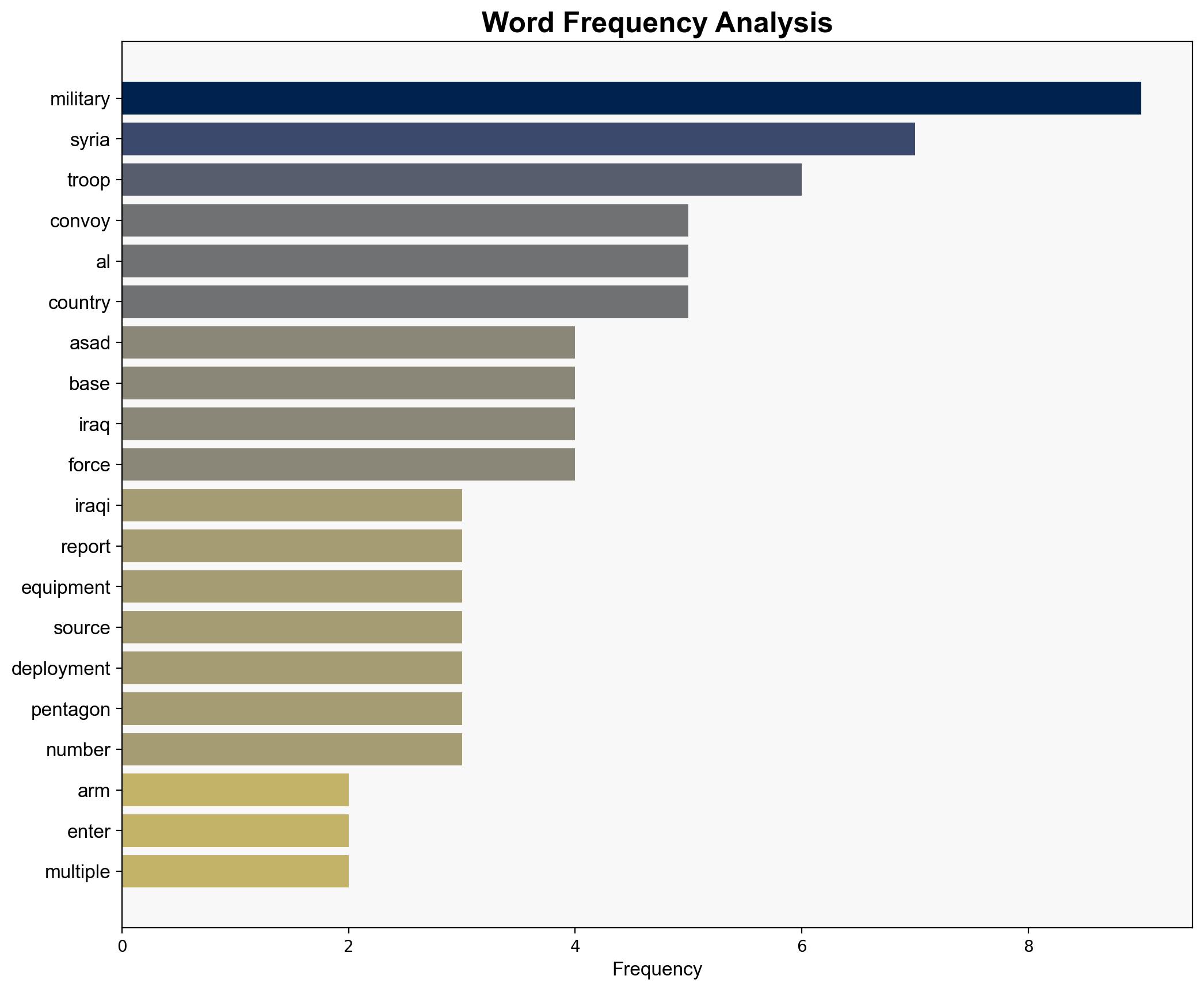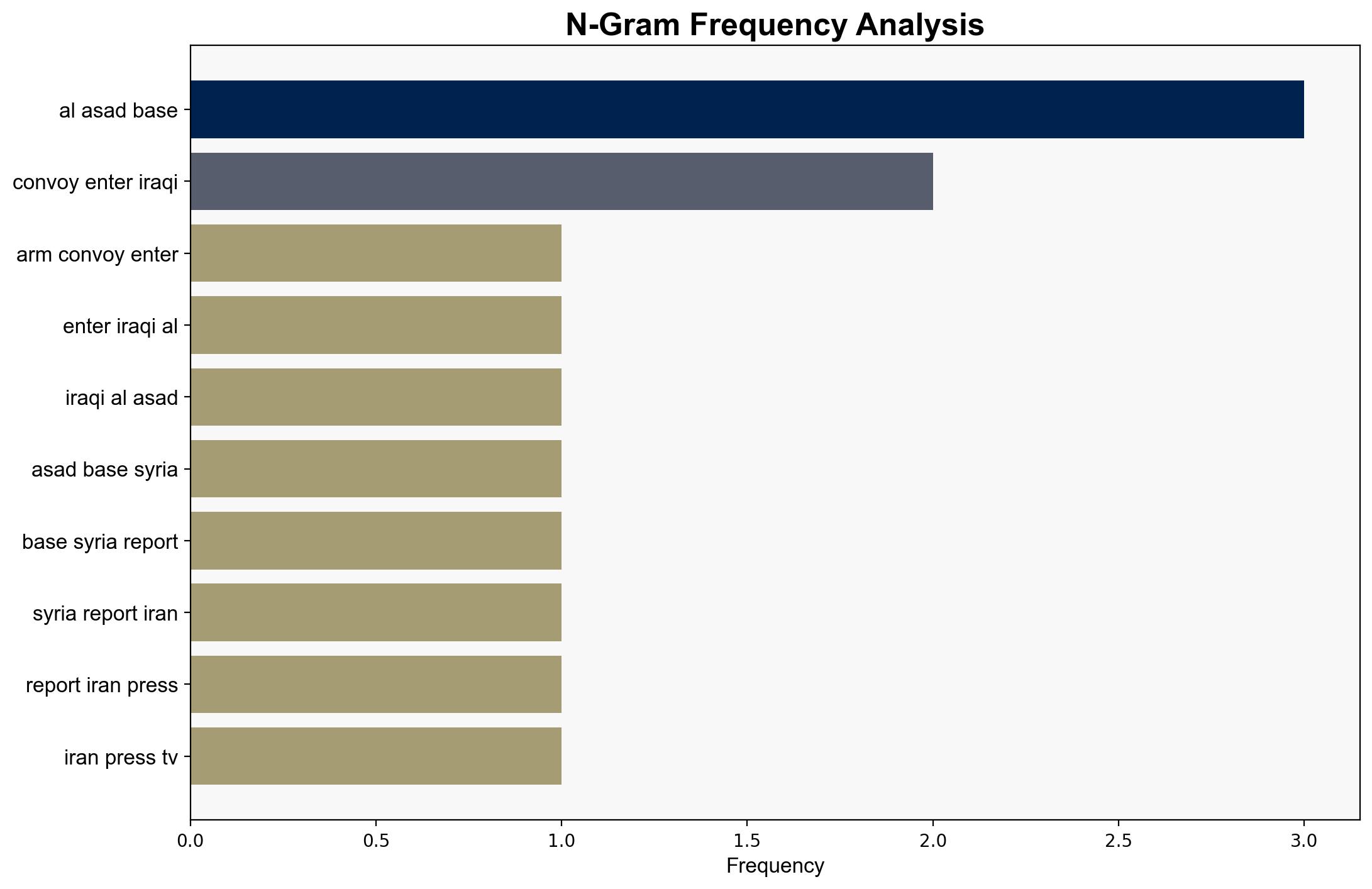US arms convoys enter Iraqi Ain al-Asad base from Syria Report – Globalsecurity.org
Published on: 2025-04-21
Intelligence Report: US arms convoys enter Iraqi Ain al-Asad base from Syria Report – Globalsecurity.org
1. BLUF (Bottom Line Up Front)
The recent movement of US military convoys from Syria to the Ain al-Asad base in Iraq signifies a strategic repositioning of forces, potentially impacting regional stability. This development may alter the balance of power in the region and affect ongoing operations against Daesh. It is crucial to monitor the implications of this redeployment on local and regional security dynamics.
2. Detailed Analysis
The following structured analytic techniques have been applied to ensure methodological consistency:
SWOT Analysis
Strengths: Enhanced security measures and air support indicate robust operational capabilities.
Weaknesses: Potential overextension of resources if further withdrawals from Syria continue.
Opportunities: Strengthening of Iraqi security forces through increased US presence.
Threats: Increased anti-US sentiment and potential for insurgent attacks on convoys.
Cross-Impact Matrix
The redeployment may influence regional alliances, with potential shifts in support from neighboring countries. The movement could also affect resource competition, particularly in energy-rich areas, and may lead to increased tensions with groups opposed to US presence.
Scenario Generation
Best Case: Stabilization of the region with strengthened Iraqi forces and reduced Daesh influence.
Worst Case: Escalation of conflicts due to perceived occupation, leading to increased insurgency.
Most Likely: Continued low-intensity conflict with periodic escalations in response to US actions.
3. Implications and Strategic Risks
The convoy movements highlight vulnerabilities in supply lines and potential for insurgent attacks. The strategic risks include increased regional tensions and the possibility of retaliatory actions by adversarial groups. The redeployment could also strain US-Iraq relations if perceived as an occupation.
4. Recommendations and Outlook
- Enhance intelligence and surveillance operations to preempt potential threats to convoys.
- Engage in diplomatic efforts with regional partners to mitigate tensions and foster cooperation.
- Develop contingency plans for rapid response to insurgent activities targeting US forces.
5. Key Individuals and Entities
No specific individuals are mentioned in the report. Focus remains on the strategic movements and implications of US military forces.
6. Thematic Tags
(‘national security threats, regional focus, military strategy, counter-terrorism’)
7. Methodological References
Structured techniques used in this report are based on best practices outlined in the ‘Structured Analytic Techniques Manual’.




